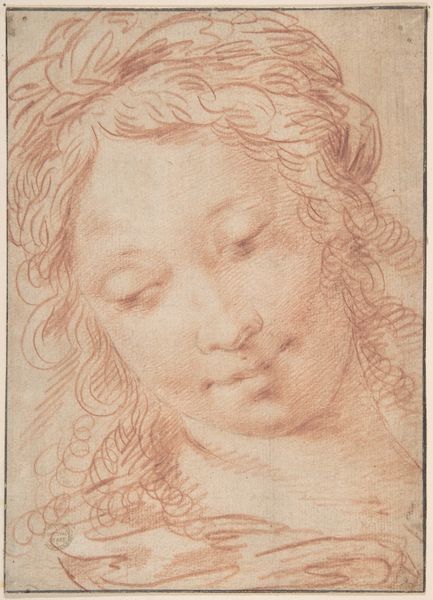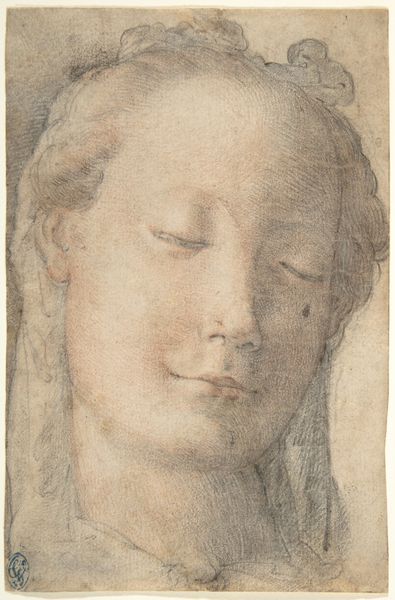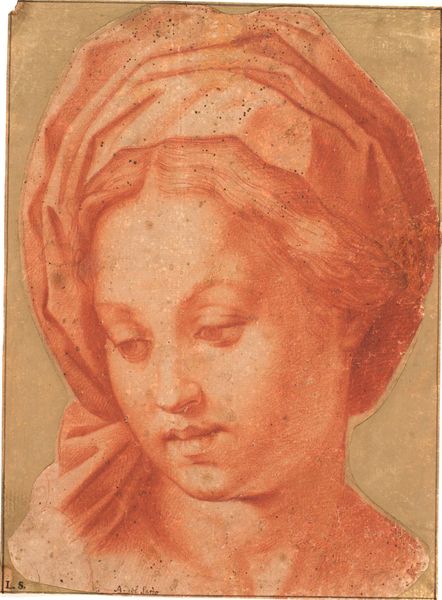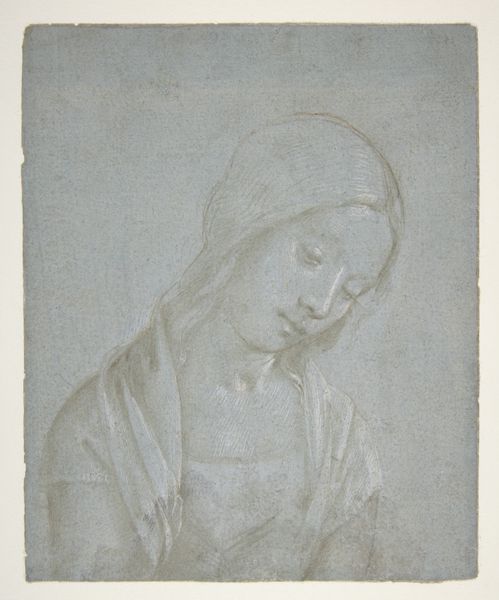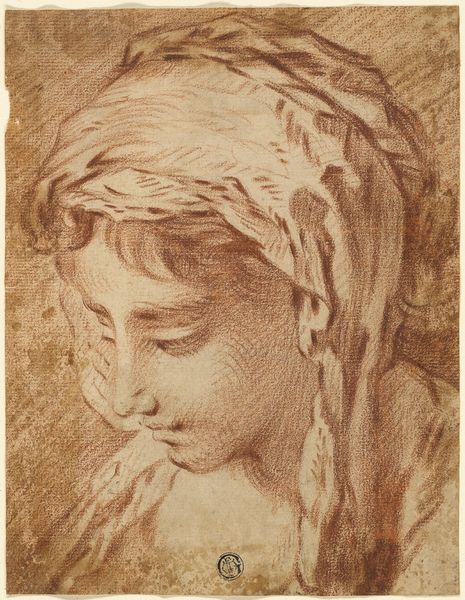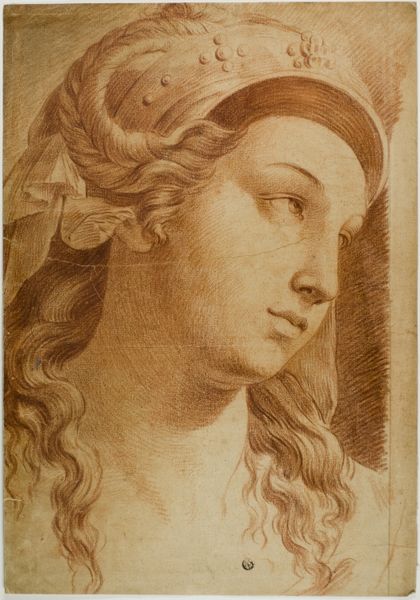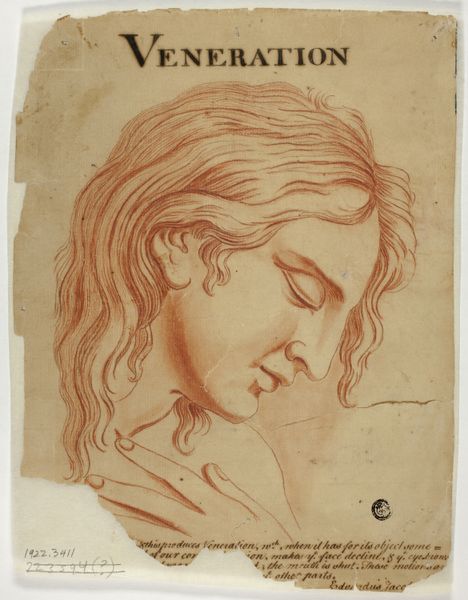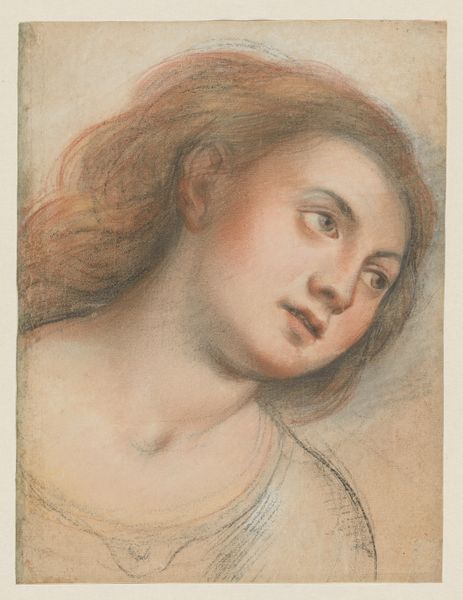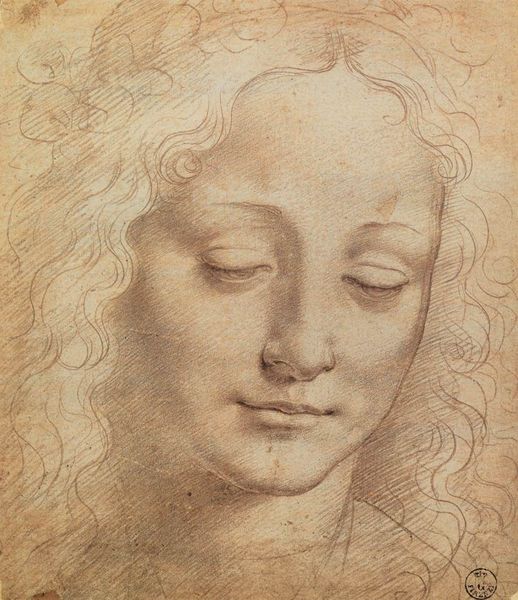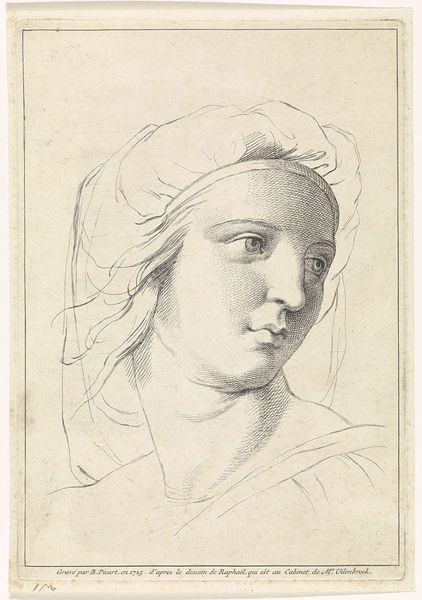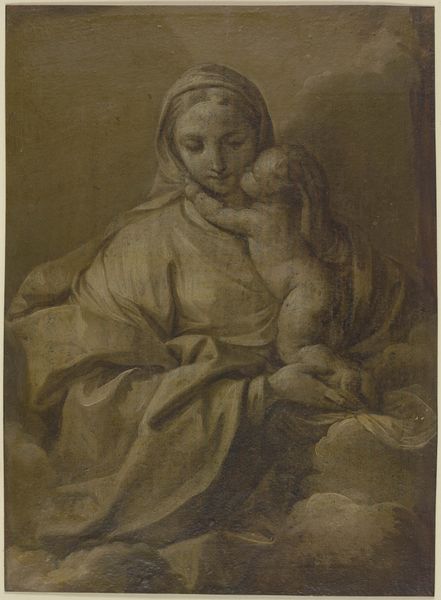
drawing, paper, chalk, charcoal
#
portrait
#
drawing
#
charcoal drawing
#
figuration
#
paper
#
11_renaissance
#
portrait head and shoulder
#
chalk
#
line
#
portrait drawing
#
charcoal
#
northern-renaissance
#
academic-art
#
italian-renaissance
#
portrait art
Dimensions: 537 × 372 mm
Copyright: Public Domain
Curator: The Art Institute holds a captivating piece from around the 18th century entitled "Muse." It's rendered in chalk and charcoal on paper. Editor: Well, she certainly exudes a delicate melancholy. The ochre tones, combined with her downward gaze, speak of quiet contemplation. Curator: Indeed. The use of red chalk allowed for soft modeling of the features and hair. Considering the Italian Renaissance revival, we have the influence of idealized female beauty, reminiscent of Raphael or Leonardo. Editor: Absolutely, and one can also read the stylistic choices as potentially exclusionary. This kind of idealized image served to solidify certain narratives around womanhood—passive, serene, and existing primarily for the aesthetic consumption of a patriarchal audience. Curator: You know, when I look at this portrait, I get a deep sense of introspection. Almost like she’s dreaming up her next stanza in life, you know, crafting an epic. There’s power there, just subtly expressed. The turn of her neck, for example; there’s determination. Editor: An interesting reading! And, that is exactly why context matters. During this time, the concept of the "muse" also served to obscure the real contributions of women artists and thinkers, reducing them to objects of inspiration rather than creators in their own right. Curator: Hmm, that's a great point to remember while soaking it all in. I have to admit, as you shed some light on those undercurrents it reframes the portrait completely, as in the artwork can be many stories unfolding at once. Editor: It's about challenging these accepted standards by questioning the relationship between power, gender, and representation in art. Seeing it as more than just another pretty face! Curator: Thank you. Your take adds such depth, encouraging us to examine historical voices and choices present within the work, enriching it all! Editor: A true exchange! "Muse" reveals how our understanding shifts as we add different layers of thought.
Comments
No comments
Be the first to comment and join the conversation on the ultimate creative platform.

